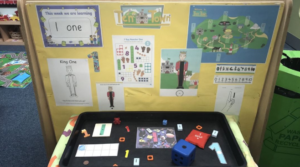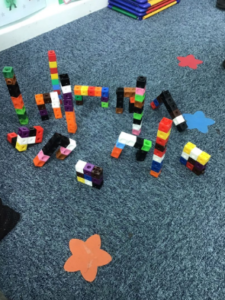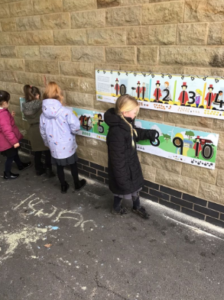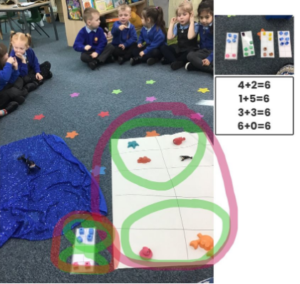Ten Town is a progressive and unique early year’s scheme used in Nursery and Reception. It is designed to develop children’s number sense and improve their number recognition and formation. At Dean Field, Ten Town slots in well to our mastery approach of teaching mathematics as all children are exposed to the same mathematical input to enable confidence building within the maths subject and for idea sharing and mathematical conversation to take place. In Reception the planning is devised into 4 sections: Comparison, Counting, Composition and Change. These sections are taught repeatedly over 2 weeks in regards to one number. This is so children are continuously building on different mathematical concepts throughout their time in Reception, ensuring they are ready to embark on mathematical learning in Y1. Alongside their input children have daily access to a maths area and different mathematical challenges through play. The children can also access Ten Town at home using their personal log in details. If you lose these, please see your child’s class teacher.
Meet King One, Fiona Five, Sir Seven and all their Ten Town Friends as they bring numbers alive in exciting animations, games, activities and even their own online TV channel – Ten Town TV!
Click here to watch the first episode of, where’s Freddie Four?
https://www.youtube.com/watch?v=39xVuKLmmDE&feature=youtu.be

Nursery’s King 1 (one) provision area.

Reception’s Nina 9 (nine) houses made with nine cubes.

Our Ten Town wall friezes.

Working on our number facts to 6.
Alongside TenTown, we also use Numberblocks. This is a recorded maths show on CBeebies which also follows the mastery maths approach. Here is one of the shows which models a great example of how we teach addition in a mastery maths style in Reception at Dean Field.
Firstly the clip shows the maths problem in concrete form (real objects – fruit). Then it models the maths problem in pictorial form (cubes representing the fruit) before modelling the maths problem in the abstract form (numbers in a number sentence). This is the process we follow in Reception when we solve maths problems. It is important for children’s understanding to always start a maths problem in the concrete – pictorial – abstract order when solving any maths problem at a young age.
This video also shows our mastery maths ‘part, part, whole’ method which we use to show how the whole number (at the top – ‘whole’) is partitioned into the two parts (‘part, part’) which is the method we use to add and subtract. In school we use ‘part, part, whole’ boards so the children can physically move the concrete (real) and pictorial (cubes, maths resources) objects and record the digits on them (abstract) to work out addition and subtraction problems. Please feel free to give this a try at home by making your own version of a ‘part, part, whole’ board (one circle at the top with a line leading to a circle each at the bottom).
This clip and explanation is also saved on Seesaw in the folders ‘Maths’, ‘Home Learning’, ‘Letters and Handouts’ and ‘Maths Calculation Tutorials’.
https://www.bbc.co.uk/iplayer/episode/b0blsv9r/numberblocks-series-3-fruit-salad
